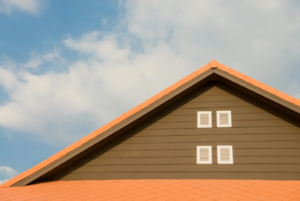Maintaining a sturdy and well-functioning roof is essential for the protection and value of your home. Before any repairs or replacements, it’s crucial to assess the roof’s condition to identify issues that could lead to costly damages if left unchecked. By taking a systematic approach to roof assessment, homeowners can ensure that their roofing structure remains intact and reliable. This guide will walk you through the key steps to evaluating your roof’s condition, so you can make informed decisions about necessary repairs.

Inspect the Roof’s Surface
The first step in assessing your roof’s condition is to inspect the surface. Start by walking around your home and carefully examining the roof from the ground. Look for any visible signs of damage such as missing or cracked shingles, curling edges, or bald spots where granules have worn away. If you notice any of these issues, it’s a clear indication that your roof may need attention. Pay close attention to the valleys, which are the areas where two roof slopes meet. These are particularly vulnerable to leaks and should be examined thoroughly for any signs of wear and tear. Next, if it’s safe and you feel comfortable doing so, consider climbing a ladder to get a closer look at your roof.
Check the Flashing and Sealant
Flashing and sealant play a critical role in preventing water from penetrating your roof at vulnerable points such as chimneys, vents, and skylights. Over time, flashing can become loose, corroded, or damaged, while sealant can crack and deteriorate. During your roof assessment, carefully inspect these areas to ensure they are intact and functioning as they should. Begin by examining the flashing around chimneys and vents. Look for any signs of rust, gaps, or missing pieces.
Evaluate the Gutters and Downspouts
Gutters and downspouts are essential components of your roof’s drainage system. They help direct water away from your home’s foundation and prevent water damage to your roof and walls. To assess your roof’s condition, it’s important to inspect the gutters and downspouts for any signs of clogging, damage, or improper installation. Start by checking the gutters for debris such as leaves, twigs, and dirt. Clogged gutters can cause water to overflow and damage your roof’s edge, leading to rot and other issues. Next, inspect the downspouts to ensure they are directing water away from the foundation of your home. If the downspouts are clogged or not functioning properly, it can lead to water pooling around the foundation, causing structural damage over time. If you discover any significant issues with the gutters or downspouts, it may be time to seek professional help. Reputable roofing companies in Houston can provide expert guidance and repairs. They will ensure your roof’s drainage system is functioning optimally and protecting your home from water damage.
Inspect the Attic for Signs of Damage
The condition of your attic can provide valuable insight into the health of your roof. When assessing your roof, take the time to inspect your attic for any signs of leaks, water damage, or poor ventilation. These issues can often go unnoticed until they become severe, so it’s important to address them early on. Start by looking for any signs of water stains or discoloration on the attic ceiling and walls. These can indicate a leak in the roof, even if there are no visible signs of damage on the exterior. Additionally, check for any signs of mold or mildew, which can develop as a result of poor ventilation or water intrusion.
Look for Signs of Algae and Moss Growth
Algae and moss growth on your roof can be more than just an aesthetic issue; they can also cause significant damage if left unchecked. Algae can cause shingles to deteriorate over time, while moss can lift and separate shingles, allowing water to seep underneath. When assessing your roof, it’s important to look for any signs of algae or moss growth and take action to remove them. Algae typically appear as dark streaks or patches on the roof, while moss can be seen as green, fuzzy growths. Both algae and moss thrive in damp, shaded areas, so pay special attention to areas of the roof that are not exposed to direct sunlight.
Assess the Overall Age and Condition of the Roof
Finally, when evaluating your roof’s condition, it’s important to consider its overall age and the materials used. Most roofs have a lifespan of 20 to 30 years, depending on the type of shingles and the quality of the installation. If your roof is approaching or has exceeded its expected lifespan, it may be time to consider a replacement, even if there are no visible signs of damage. Consider the type of materials used in your roof. Asphalt shingles, for example, tend to have a shorter lifespan than metal or tile roofs.

Assessing your roof’s condition before undertaking repairs is an essential step in maintaining the longevity and performance of your home’s most vital structure. By following these steps—inspecting the surface, checking the flashing, evaluating the gutters, inspecting the attic, looking for algae and moss, and considering the overall age—you can ensure that your roof remains in top condition and avoid costly repairs in the future. Regular assessments and maintenance will not only protect your home but also provide peace of mind, knowing that your roof is in optimal condition.



